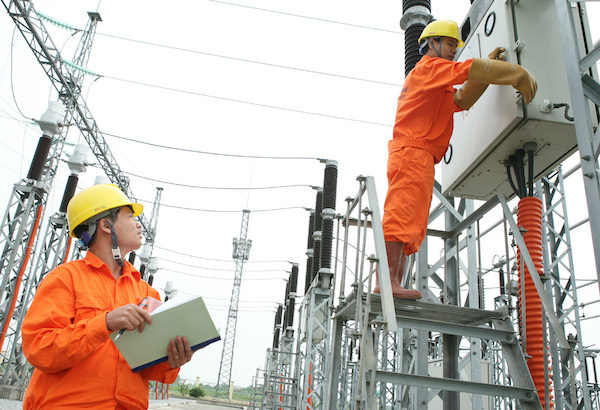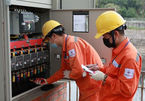
Vietnam’s electricity access index has made great progress in the World Bank’s business environment ranking. In 2020, Vietnam ranked 27th, a jump of 108 grades in the ranking after two more procedures were cut and the time needed to access electricity was cut by 84 days compared with 2015.
How have ministries and branches made efforts to accelerate reform in electricity access?
The Ministry of Industry and Trade (MOIT) and Electricity of Vietnam (EVN) have been presiding over reform to improve the electricity access index. The ministries and agencies joining forces to carry out reform, including MONRE (Ministry of Natural Resources and the Environment), MOC (Ministry of Construction), Ministry of Public Security and municipal and provincial people’s committees. In cities and provinces, local departments of industry and trade; construction; architecture and transports, and districts’ people’s committee have the major responsibility in implementing the program.
MOIT, aware of its responsibility and the importance of the electricity access index improvement, has been actively and quickly amending circulars in order to support EVN, the backbone enterprise in the power industry, to solve problems in electricity access. In the last five years, the ministry amended Circular 33 four times as per the proposal by EVN.
Carrying out reform and improving the electricity access index are completely consistent with the interests and the demand for the power sector in general and for EVN in particular. Therefore, EVN has been taking initiative in implementing tasks to improve the index, including things not mentioned in Resolutions 19 and 02.
EVN has standardized, simplified and made electronic all internal administrative procedures. It has been pioneering in digital transformation and providing digital services to customers. The improvements in the scores of the post-electricity supply indicators are mostly the results of efforts in applying modern equipment and technologies in the operation and maintenance of the power system.
And finally, all the tasks and solutions to improve the electricity supply indicators shown in the resolutions are within the competence of the Government, MOIT and local authorities at all levels.
Motivation for reform
For the reasons behind successes in improving the electricity access index, the following lessons can be drawn for the reform process:
First, it is possible to improve the indexes about business environment and jump from the bottom to the top of the rankings within a reasonable time, thereby, obtaining substantial improvement in the corresponding quality of the business environment.
Second, the concordance between wealth interests and the interests of the agencies and organizations in charge of organizing the implementation of the reform will create a strong and sustainable impetus for reform. They will be creative and dynamic, bringing into full play their capacity in performing assigned tasks to achieve the highest possible goals.
Third, it is necessary to quickly put reality into policies, so that policies can best solve practical problems. Thanks to this, unreasonable barriers will be removed, modern management methods and technologies will be applied, and the quality of the business environment will be upgraded.
In the next development period, maintaining the high ranking and improving the scores of electricity access will continue to be a mission of the business environment reform program.
Reform solutions include:
Researching and applying international good practices of the countries leading in electricity access index.
Synchronizing solutions in investment, construction, power system operation and management in an effort to obtain the perfect score of 8/8 in power supply reliability and electricity price transparency.
Power supply reliability indicators: average number of customer outages (SAIFI) ≤ 1 time/year; average outage time of customers (SAIDI) ≤ 1 hour/year.
Applying IT, automating the distribution grid to detect and handle problems early, automatically switch on/off, and automatically calculate SAIDI, SAIFI indicators.
Completing the database about medium and low voltage grids, applying digital map technology (GIS), integrating management software systems, and equipping with field application software for employees to reduce the number of internal procedures among divisions (supplying installation materials, approving documents and procedures, etc.) so as to shorten time and cut procedures for surveying steps and connection point provision.
Connecting the national database on population, businesses and land, and reducing the number of documents customers have to provide, as well as taking the initiative in approaching customers when they register for business establishment.
Nguyen Minh Thao
Central Institute of Economic Management

Reform lessons from electricity sector: nothing is impossible
Electricity access is one of 10 indicators that measure the quality of the national business environment according to the World Bank global business environment ranking.

Public administration learns to be cautious before making decisions
The Hanoi People’s Committee has amended the regulation on travel permits during social distancing, and now people no longer have to get certification from ward or commune authorities.